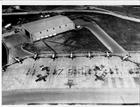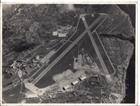750 NAVAL AIR SQUADRON BRING BACK MALTA MEMORIES
RNAS Culdrose 750 Naval Air Squadron’s recent visit toMaltabrought back warm memories from some of the Mediterranean Islanders who had worked on the squadron, over 50 years ago.
Stationed at Royal Naval Air Station Hal Far, also known as HMS Falcon, 750 NAS arrived in 1959 as part of the Fleet Air Arm’sObserverSchool, conducting Observer training with nine Percival Sea Prince T.1 flying classrooms. Its main task was providing basic training to officers before they moved on to specialist operational flying Units at various Naval Air Stations across theUK.ObserverSchoolstudents were expected to achieve at least 100 flying hours in the Sea Prince and by the end of their course would have attained a high standard in air navigation, simple radar operations and communications. In 1960, the squadron added Sea Venoms and Sea Vampires for some Fleet requirements work, but were mainly used for high level navigation, on which students would get some 30 hours basic experience in all-weather jet flying.
“It was remarkable to see where the squadron used to operate from in the early sixties”, said Lieutenant Rich Thorpe, an Instructor on 750’s King Air Avenger aircraft. “Back in the day, Observer training was conducted on the Island at RNAS Hal Far because of the fairer climate and a lot of the Fleet was actually based around the Mediterranean, so there were plenty of targets.”
The Squadron visited theIslandas part of a long range flying exercise for one of its pilots as well as the Malta Airshow. The old Naval Air Station site at Hal Far is now occupied by a large sprawling industrial estate helpingMalta’s export figures, but traces of the Royal Navy’s presence can still be found.
“As we flew over you can still make out the Base, its runways, one of its control towers (it had three!) and the fire station”, continued Rich Thorpe. “During those days it would have been the main shore base for carrier-borne aircraft working from the Mediterranean Fleet’s Aircraft Carriers. I was amazed that the Maltese people still remembered the squadron from all those years ago.”
RNAS Hal Far was always the most popular and busiest airfield in the entire Fleet Air Arm and the last overseas Naval Air Station when it closed in 1965. TheObserverSchooland 750 NAS relocated back to theUK, taking up residence at RNAS Lossiemouth inScotland, before its present move to RNAS Culdrose in 1972.
The squadron now trains both commissioned and non-commissioned aircrew from the RN and more recently the RAF using the latest technology found on the King Air Avenger, which entered service in 2012 The aircraft are provider by the ‘Training Service Provider’ Ascent; the industry partner jointly responsible for the delivery of the UKMFTS (United Kingdom Military Flying Training System) programme alongside the MOD and 22 Training Group.






